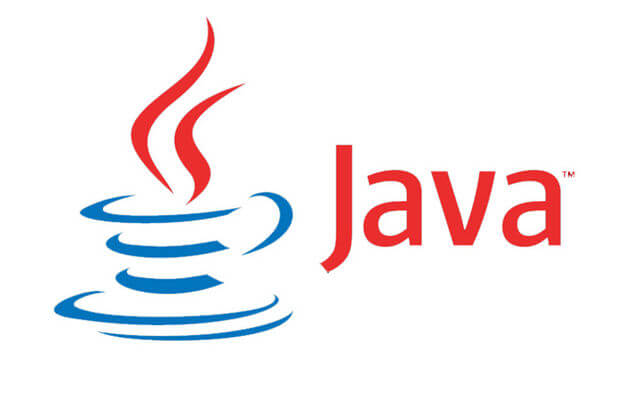
Web services can be created using two methods: top-down and bottom-up. Bottom-up Web services development involves creating a Web service from a Java™ bean or enterprise bean.
When creating a Web service using a top-down approach, first you design the implementation of the Web service by creating a WSDL file. You can do this using the WSDL Editor. You can then use the Web services wizard to create the Web service and skeleton Java™ classes to which you can add the required code.
Although bottom-up Web service development may be faster and easier, especially if you are new to Web services, the top-down approach is the recommended way of creating a Web service. By creating the WSDL file first you will ultimately have more control over the Web service and can eliminate interoperability issues that may arise when creating a Web service using the bottom-up method.
Although bottom-up Web service development may be faster and easier, especially if you are new to Web services, the top-down approach is the recommended way of creating a Web service.
When creating a Web service using a bottom-up approach, first you create a Java bean or EJB bean and then use the Web services wizard to create the WSDL file and Web service.
Develop Web Service should have a knowledge about XML Schema and Web Services Description Language. You can learn those at W3Schools:
XML Schema: http://www.w3schools.com/schema/default.asp
Web Services Description Language: http://www.w3schools.com/WSDL/default.asp
This tutorial is use bottom-up to develop Web Service to let you have a basic concept, because use bottom-up method develop is easy than use top-down method. Please create a WAR project and add a Java class:
package sample.ws;
import javax.jws.WebMethod;
import javax.jws.WebService;
@WebService(
name = "CalculaterService",
serviceName = "CalculaterService",
portName = "CalculaterServicePort",
targetNamespace = "http://www.memorylack.com/CalculaterService/")
public class CalculaterService {
@WebMethod
public int add(int i, int k) {
return i + k;
}
@WebMethod
public int subtract(int i, int k) {
return i - k;
}
}
You have create a simple Web Service with a Java bean.
@WebService(
name = "CalculaterService",
serviceName = "CalculaterService",
portName = "CalculaterServicePort",
targetNamespace = "http://www.memorylack.com/CalculaterService/")This annotation is a marker to notify Java EE container this is a Web Service class.
- name: display on application server
- serviceName: display in URL and WSDL
- portName: display in WSDL
- targetNamespace : XML namespace, display in WSDL and XSD
@WebMethod
This annotation is a marker to notify Java EE container this is a Web Service function.
CalculaterService also is a EJB session bean:
package sample.ws;
@Local
public interface CalculaterService{
public int add(int i, int k);
public int subtract(int i, int k);
}
package sample.ws;
import javax.jws.WebMethod;
import javax.jws.WebService;
@Stateless
@WebService(
name = "CalculaterService",
serviceName = "CalculaterService",
portName = "CalculaterServicePort",
targetNamespace = "http://www.memorylack.com/CalculaterService/")
public class CalculaterServiceBean implements CalculaterService{
@WebMethod
public int add(int i, int k) {
return i + k;
}
@WebMethod
public int subtract(int i, int k) {
return i - k;
}
}
Deploy this project to the application server and use browser to open http://localhost/CalculaterService?wsdl. Browser will display WSDL content same as below:
<?xml version="1.0" encoding="UTF-8"?>
<definitions xmlns="http://schemas.xmlsoap.org/wsdl/" xmlns:soap="http://schemas.xmlsoap.org/wsdl/soap/" xmlns:tns="http://www.memorylack.com/CalculaterService/" xmlns:xsd="http://www.w3.org/2001/XMLSchema" name="CalculaterService" targetNamespace="http://www.memorylack.com/CalculaterService/">
<types>
<xsd:schema>
<xsd:import namespace="http://www.memorylack.com/CalculaterService/" schemaLocation="CalculaterService_schema1.xsd" />
</xsd:schema>
</types>
<message name="addResponse">
<part name="parameters" element="tns:addResponse" />
</message>
<message name="add">
<part name="parameters" element="tns:add" />
</message>
<message name="subtractResponse">
<part name="parameters" element="tns:subtractResponse" />
</message>
<message name="subtract">
<part name="parameters" element="tns:subtract" />
</message>
<portType name="CalculaterService">
<operation name="add">
<input message="tns:add" />
<output message="tns:addResponse" />
</operation>
<operation name="subtract">
<input message="tns:subtract" />
<output message="tns:subtractResponse" />
</operation>
</portType>
<binding name="CalculaterServicePortBinding" type="tns:CalculaterService">
<soap:binding style="document" transport="http://schemas.xmlsoap.org/soap/http" />
<operation name="add">
<soap:operation soapAction="" />
<input>
<soap:body use="literal" />
</input>
<output>
<soap:body use="literal" />
</output>
</operation>
<operation name="subtract">
<soap:operation soapAction="" />
<input>
<soap:body use="literal" />
</input>
<output>
<soap:body use="literal" />
</output>
</operation>
</binding>
<service name="CalculaterService">
<port name="CalculaterServicePort" binding="tns:CalculaterServicePortBinding">
<soap:address location="http://localhost/CalculaterService" />
</port>
</service>
</definitions>
Application server generate WSDL file, also generate XSD file. Use browser open http://localhost/CalculaterService/CalculaterService_schema1.xsd, browser display content same as below:
<?xml version="1.0" encoding="UTF-8"?>
<xs:schema xmlns:xs="http://www.w3.org/2001/XMLSchema" xmlns:tns="http://www.memorylack.com/CalculaterService/" version="1.0" targetNamespace="http://www.memorylack.com/CalculaterService/">
<xs:element name="add" type="tns:add" />
<xs:element name="addResponse" type="tns:addResponse" />
<xs:element name="subtract" type="tns:subtract" />
<xs:element name="subtractResponse" type="tns:subtractResponse" />
<xs:complexType name="add">
<xs:sequence>
<xs:element name="arg0" type="xs:int" />
<xs:element name="arg1" type="xs:int" />
</xs:sequence>
</xs:complexType>
<xs:complexType name="addResponse">
<xs:sequence>
<xs:element name="return" type="xs:int" />
</xs:sequence>
</xs:complexType>
<xs:complexType name="subtract">
<xs:sequence>
<xs:element name="arg0" type="xs:int" />
<xs:element name="arg1" type="xs:int" />
</xs:sequence>
</xs:complexType>
<xs:complexType name="subtractResponse">
<xs:sequence>
<xs:element name="return" type="xs:int" />
</xs:sequence>
</xs:complexType>
</xs:schema>
If you can view WSDL and XSD, you are finish to deploy Web Service on application server. We can use soapUI to simulate Web Service Client.
Download address: http://sourceforge.net/projects/soapui/files/
Please select installable file to download. When you installed sopaUI, please follow below step to simulate Web Service Client.
- File -> New soapUI Project
- Project name enter localhost and click OK
- Project + mouse right clicke -> Add WSDL
- WSDL Location enter http://localhost/CalculaterService/CalculaterService.wsdl
Now, you can see 2 web service function name in the tree. Open add function and open Request 1. Left window will display below XML content:
<soapenv:Envelope xmlns:soapenv="http://schemas.xmlsoap.org/soap/envelope/"
xmlns:ws="http://www.memorylack.com/CalculaterService/">
<soapenv:Header />
<soapenv:Body>
<ws:add>
<arg0>?</arg0>
<arg1>?</arg1>
</ws:add>
</soapenv:Body>
</soapenv:Envelope>Modify arg0 and arg1:
<soapenv:Envelope xmlns:soapenv="http://schemas.xmlsoap.org/soap/envelope/"
xmlns:ws="http://www.memorylack.com/CalculaterService/">
<soapenv:Header />
<soapenv:Body>
<ws:add>
<arg0>1</arg0>
<arg1>2</arg1>
</ws:add>
</soapenv:Body>
</soapenv:Envelope>Send to application server. Application server should be response below XML:
<soapenv:Envelope xmlns:soapenv="http://schemas.xmlsoap.org/soap/envelope/">
<soapenv:Body>
<dlwmin:addResponse xmlns:dlwmin="http://www.memorylack.com/CalculaterService/">
<return>3</return>
</dlwmin:addResponse>
</soapenv:Body>
</soapenv:Envelope>However, web service can be input and return Object type:
Object Class:
package sample.ws;
public class Info{
private String firstName;
private String lastName;
public String getFirstName(){
return firstName;
}
public String getLastName(){
return lastName;
}
public void setFirstName(String firstName){
this.firstName = firstName;
}
public void setLastName(String lastName){
this.lastName = lastName;
}
}
Web Service:
@WebMethod
public String sayHello(Info info) {
return "Hello! " + info.getFirstName()
+ " " + info.getLastName();
}
@WebMethod
public Info getInfo(int id){
return findInfo(id);
}
Next post: Java Use Top Down Method and JAX-WS to Develop Web Service Provider

